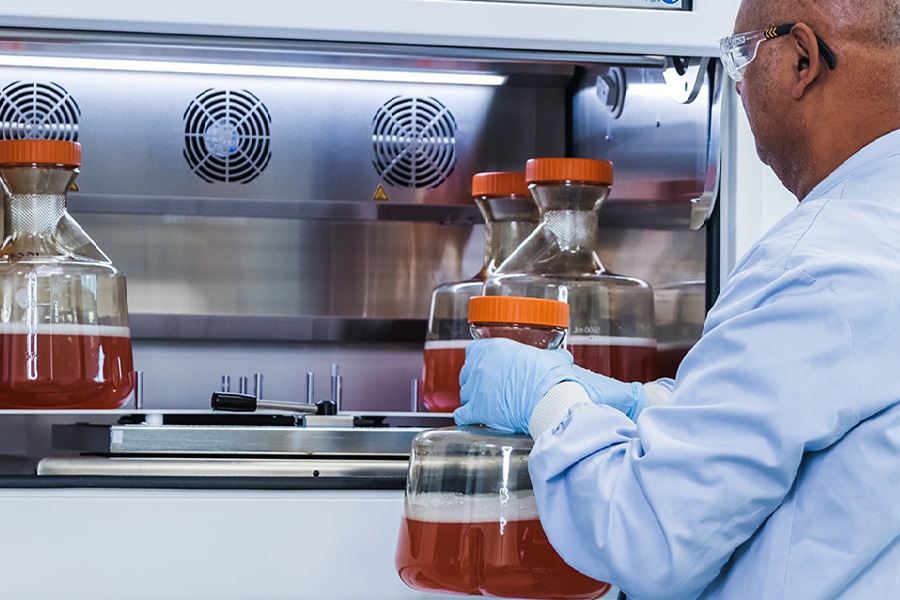Why Abzena?
Our focused approach.
These molecules display promising biotherapeutic activity and are increasingly being used by biopharmaceutical companies for treating challenging diseases such as cancer, autoimmune and neurological disorders. Examples of complex therapeutics entering the market include fusion proteins, bioconjugates, and bispecific antibodies.
With their increased use as biotherapeutics, the cell line development (CLD), upstream development, and downstream development of these biological molecules must be carefully optimized to produce a high-quality product at high yields.
Although biologics are becoming increasingly complex, there is an established expectation of an accelerated timeline, so how can the demand for both speed and quality be balanced? As mentioned in this series’ first post, the answer can be adopting a proactive approach to CLD development. In addition, other preparative steps can be implemented to further shorten timelines without compromising the quality and yield of the desired product.
Starting with the selection of an appropriate vector, access to a ready-made library of vectors that have been carefully designed, tested, and optimized can readily shorten timelines.
The template vector backbone will already include key regions, such as those necessary for expression of the therapeutic and selection screening (for example genes encoding antibiotic resistance or a selectable metabolic marker). Depending on the biologic, specific subunits can be encoded into the vector, which can easily be edited. For example, for antibody-based molecules, vectors include basic antibody genes of different isotypes and allotypes ready ‘off-the-shelf’. These can be designed so that individual domains can be rapidly cloned in and out allowing for rapid adjustments of the coding regions. In this way, panels of variants may be quickly generated differing in either the variable regions and/or constant domains.
The panel of vectors produced can be transfected into host cells and through well-defined selection methods, stable pools are rapidly generated. These pools can be used to produce purified material from the panel in 100’s mg or even gram quantities. High throughput analytical techniques allow for in-depth characterization of the panel. In addition, the material produced can be used in in vivo studies. Thus stable pools provide data on key characteristics including productivity, stability, immunogenicity, in vivo potency, and pharmacokinetics (PK) to aid lead candidate selection and help to avoid potential challenges in subsequent development steps.
Developmental stages that can be run in parallel may also be identified, helping to maintain a proactive approach. From the fast stable pools, a lead candidate is selected, and the other pools from other candidates can be frozen in case they are required later.
From selected stable pools, clones can be rapidly isolated and high yielding clones identified using modern cloning technologies such as micro-fluidics. Clone selection and characterization can occur rapidly using high throughput, scale down bioreactor systems combined with high throughput analytics to quickly identify the most promising clones, based on both productivity and product quality.
The clones selected then need to be tested for stability, to ensure productivity is maintained at larger scales. This is a time-consuming process with few shortcuts. However, in some cases it may be desirable to move forward with a “pool of clones” where the top clones are cultured and combined in a platform bioreactor system, to generate material for toxicology (Tox) studies. This removes Tox studies from the critical path while allowing further characterization of the clones used in the pool1.
Partnering with a dedicated contract development and manufacturing organization (CDMO) with extensive experience in complex biologic production not only enables access to expert knowledge but often allows the use of specialized materials. CDMOs can provide optimized cell lines, constructed vector libraries, and vector integration techniques from the company’s bank, along with highly specialized bioanalytical equipment. The direct insertion of the gene into an already optimized vector and cell line using a well-established integration system will help generate and identify a lead candidate quickly.
Abzena is a bioconjugate- and biologics-focused CDMO+CRO that pushes development of novel treatments forward at every stage from discovery through commercial launch. With the ability to tailor its strategy and customer experience to each project, Abzena develops and implements innovative solutions that enable biotech and biopharma companies to realize the full potential of their investments in human health.
Find out more about our proactive approach by downloading our whitepaper entitled: ‘Cell Line Development: The Linchpin in Successful Biotherapeutic Development‘.
